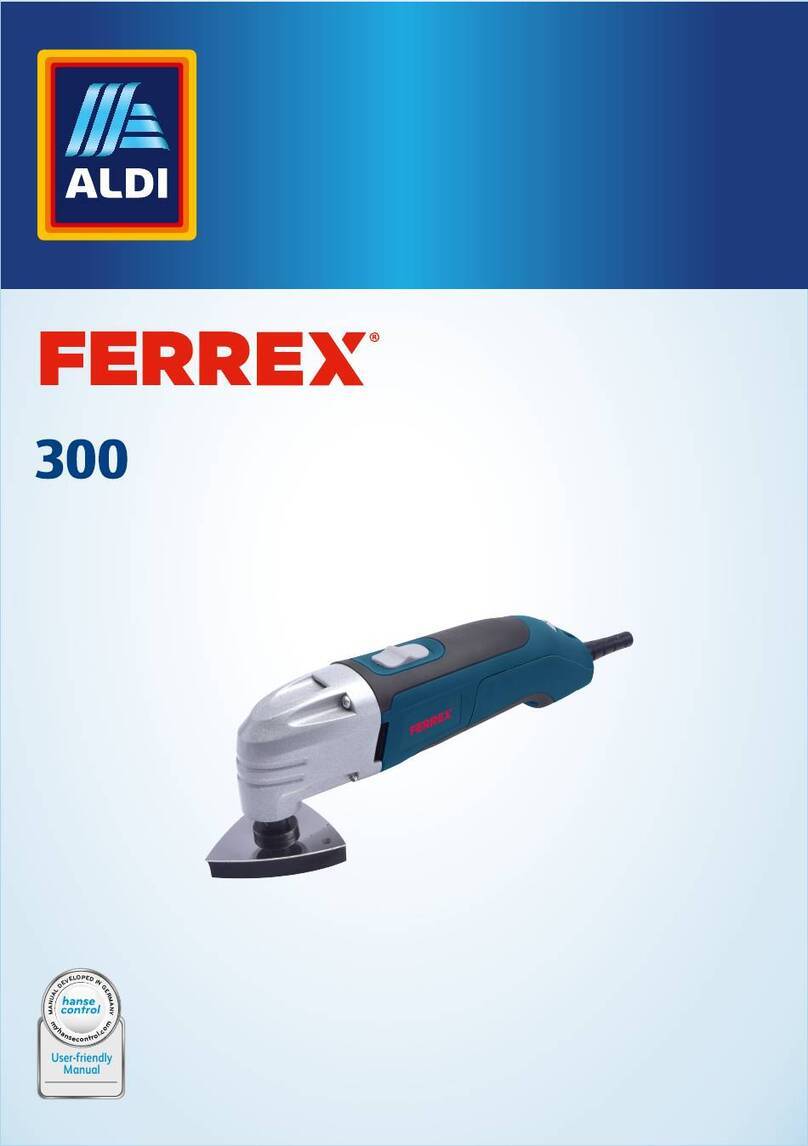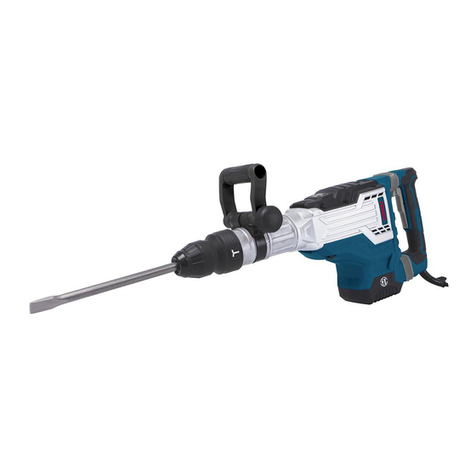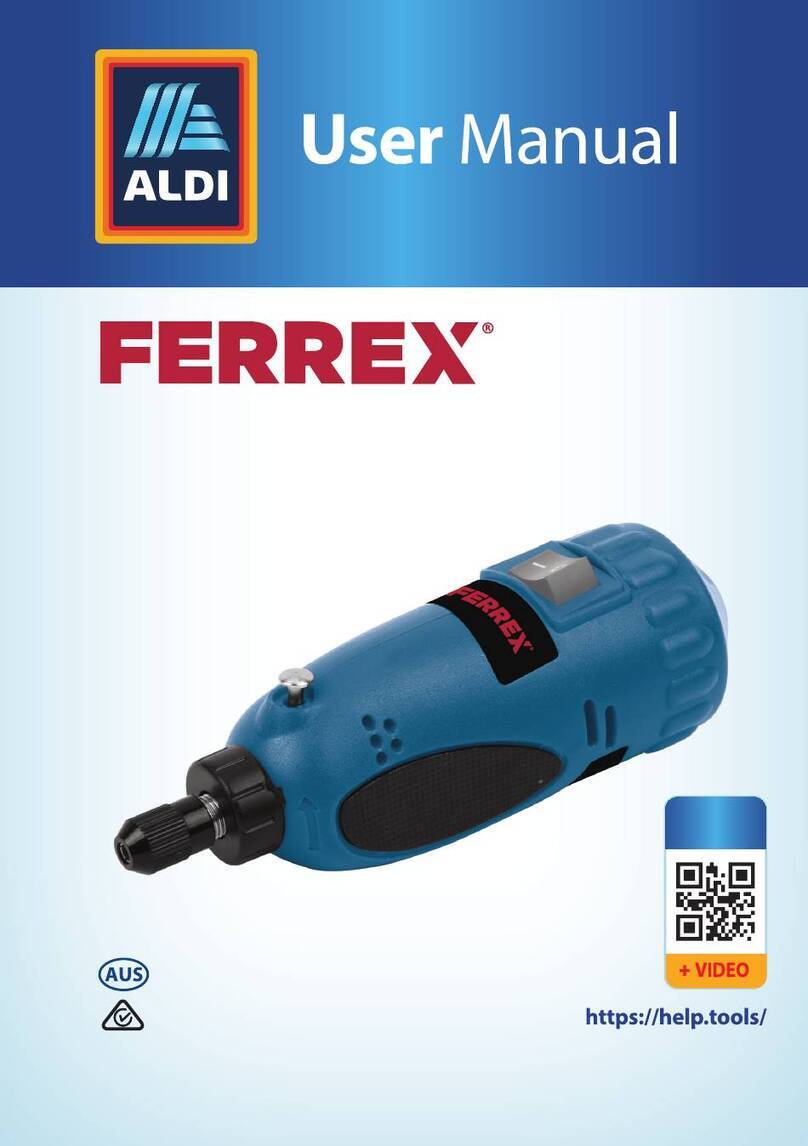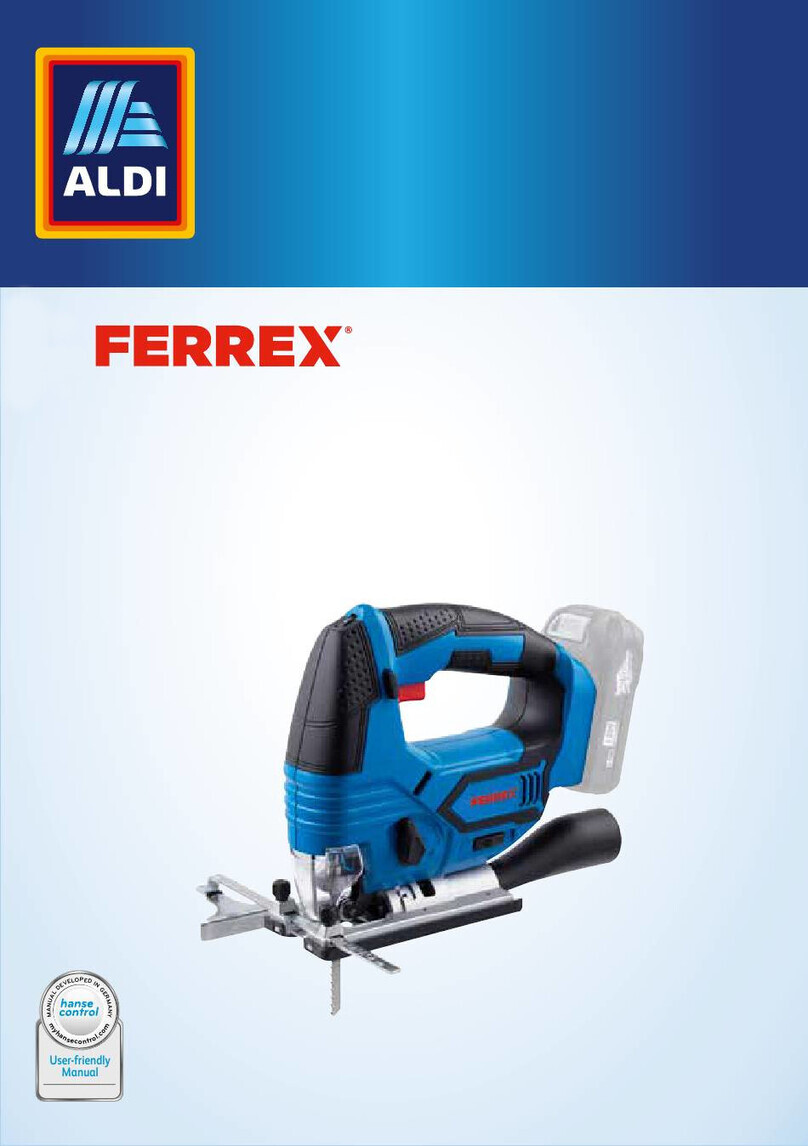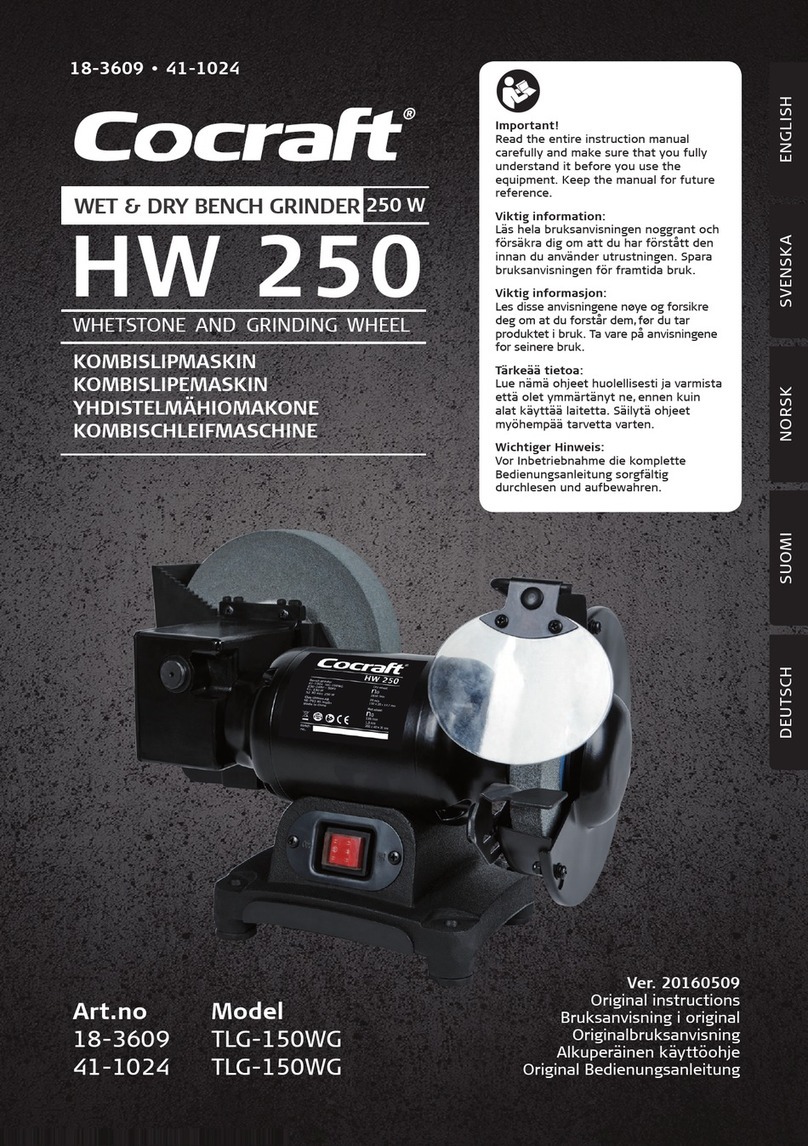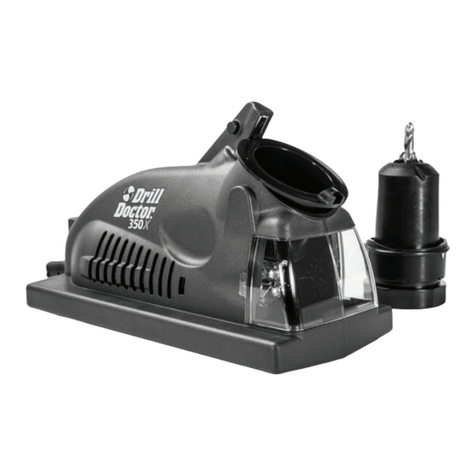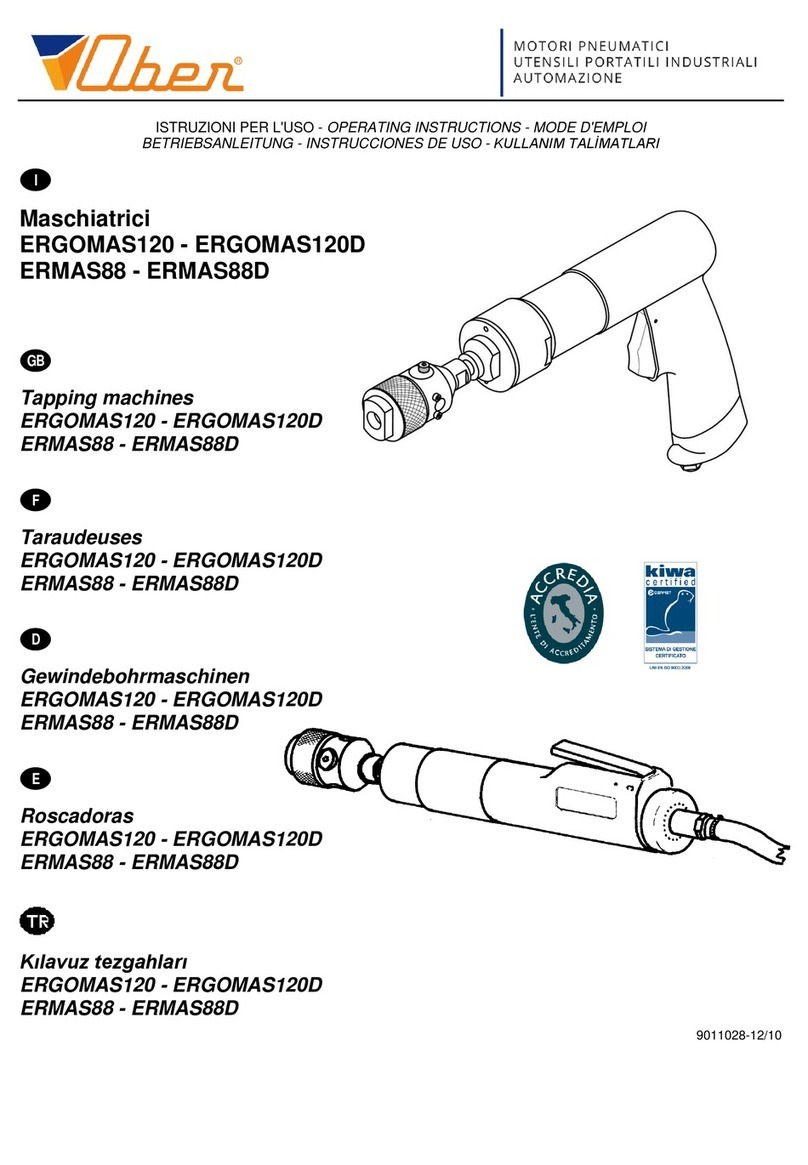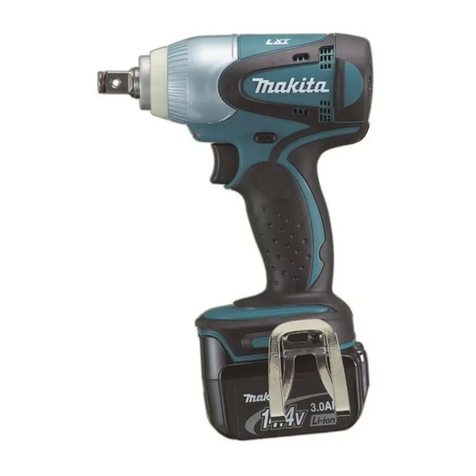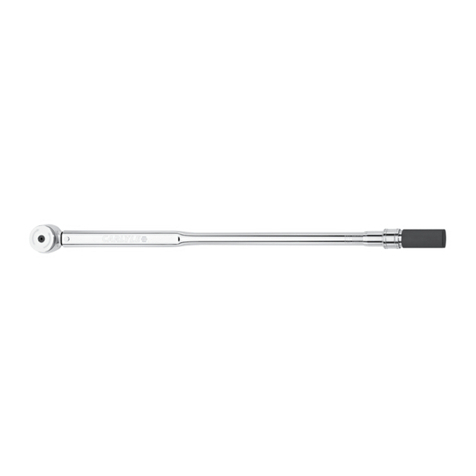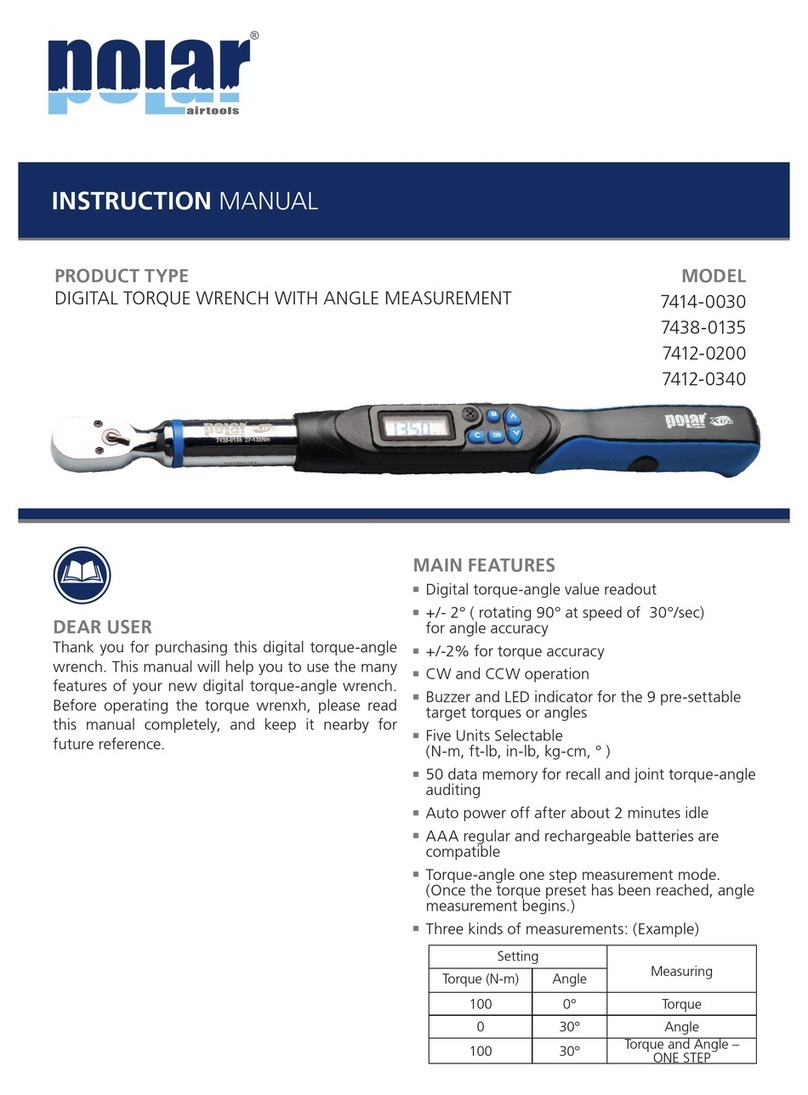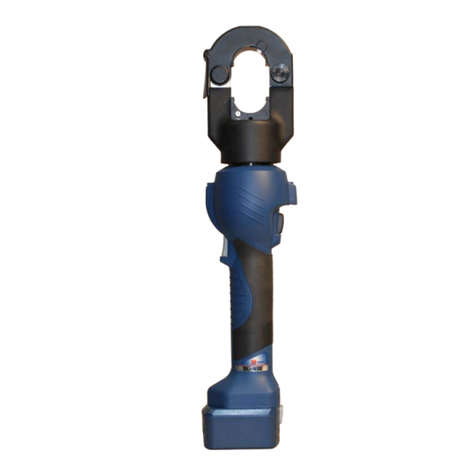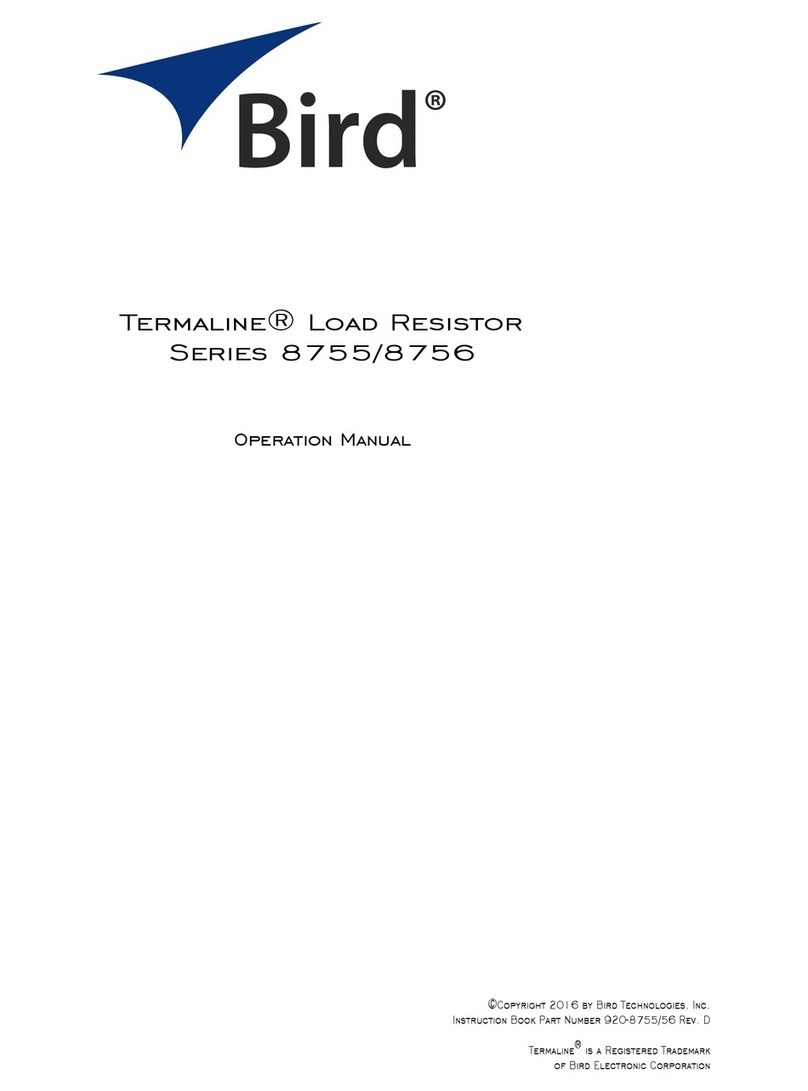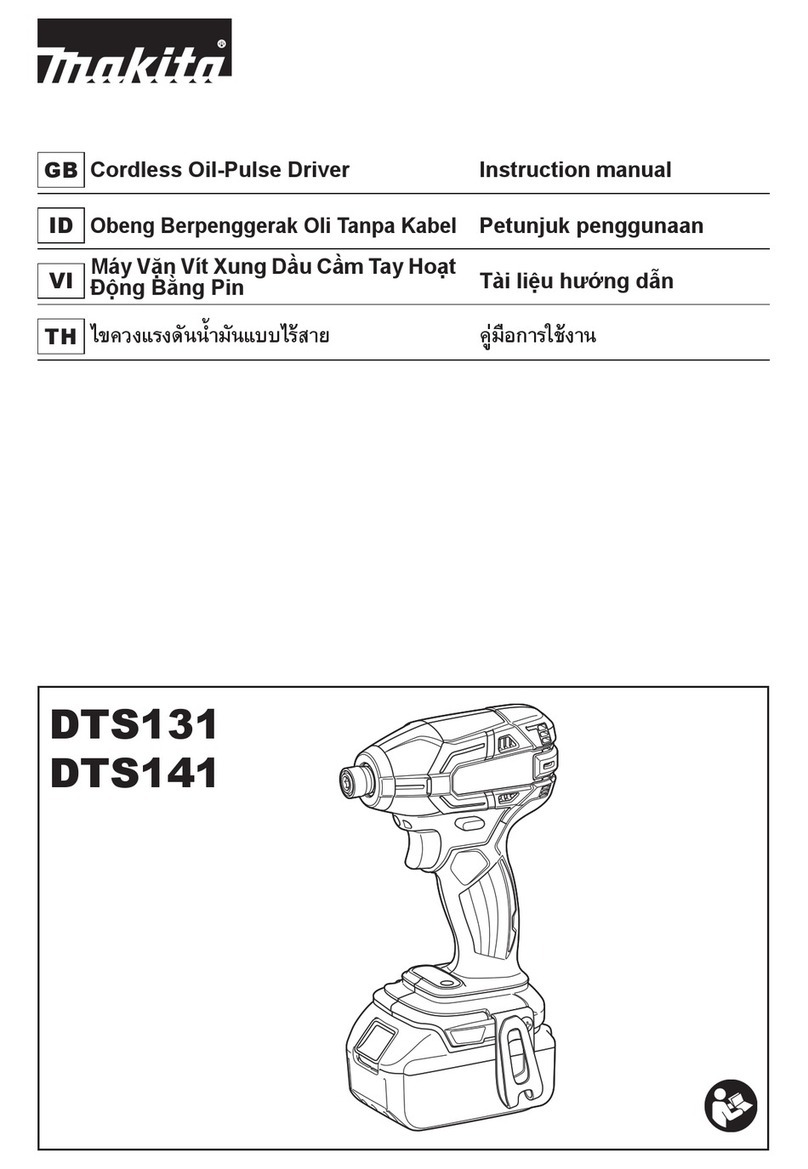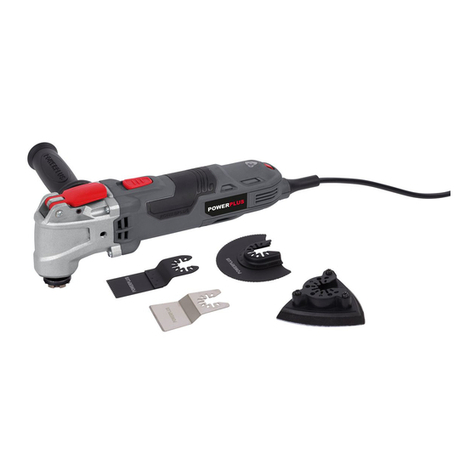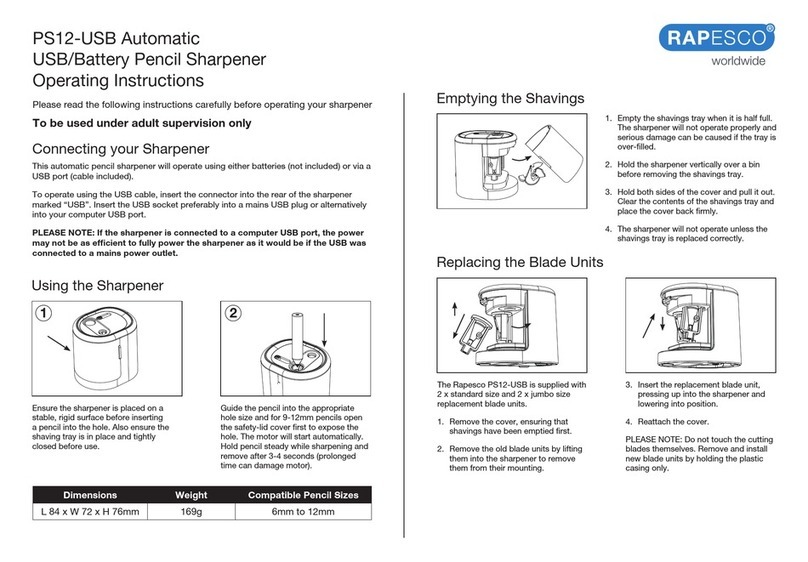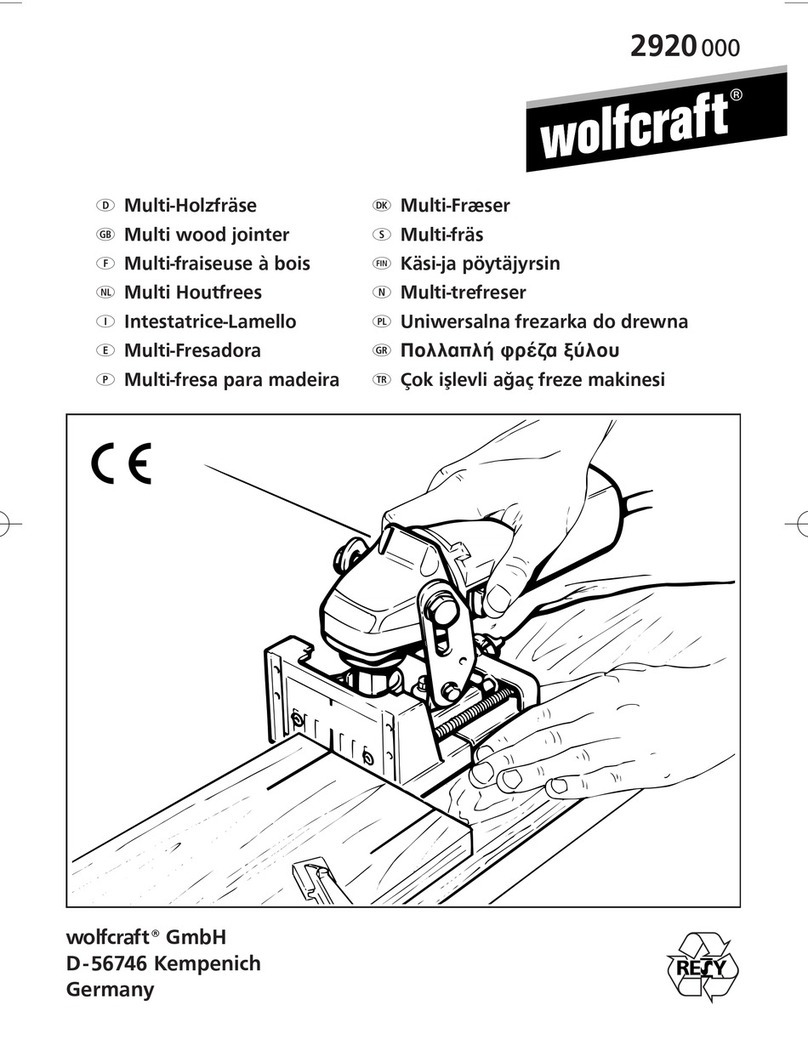FERREX FM300 User manual

300W MULTIFUNCTION
TOOL
User Manual
ID: #05007
m
y
h
a
n
s
e
c
o
n
t
r
o
l
.
c
o
m
M
A
N
U
A
L
D
E
V
E
L
O
P
E
D
I
N
G
E
R
M
A
N
Y
User-friendly
Manual
Original instructions

Package contents................................................................3
Components ............................................................................. 6
General information............................................................ 7
Reading and storing the user manual ..................................7
Explanation of symbols ...........................................................7
Safety ...................................................................................8
Explanation of notes ............................................................... 8
Scope of use.............................................................................. 8
Residual risks............................................................................ 9
General power tool safety instructions................................ 9
Safety instructions for multifunction tools......................... 12
Safety instructions for sanding paint.................................. 13
Safety instructions for dust extraction................................ 14
Safety precaution for fire prevention.................................. 14
Safety precautions for persons with medical implants.... 14
Preparation ....................................................................... 15
Checking the multifunction tool and pack contents ........ 15
Familiarising yourself with the functional principle......... 15
Familiarising yourself with permissible materials ............ 15
Preparing the multifunction-tool ........................................16
Operation........................................................................... 18
Preselecting the oscillation rate...........................................18
Switching the multifunction tool on and off ......................18
Working with the multifunction tool ...................................18
Cleaning and maintenance............................................... 19
Cleaning the multifunction tool .......................................... 20
Checking the multifunction tool ......................................... 20
Storage and transport ......................................................20
Troubleshooting.................................................................21
Technical data ................................................................... 22
Noise/vibration information ............................................ 22
Disposal.............................................................................. 25
Disposing of the packaging ..................................................25
Disposal of the multifunction tool........................................25
Declaration of Conformity................................................. 26
Contents

3
Package contents
Dok./Rev.-Nr. 197406_20190626
A
1
1 2 3
4
5
6
78 9
10 11 12 13
14
15
Package contents

4
Package contents
B
CD

5
Package contents
E
F

6
Package contents
Components
1Locking bracket
2Clamping lever
3On/Off switch
4Oscillation rate preselector
5Thread (for the handle), 2×
6Tool holder
7Plunge-cut saw blade
8Segment saw blade
9Sanding plate
10 Scraper
11 Sanding sheet
12 Handle
13 Dust extraction adapter
14 Extractor line
15 Holding clip
16 Storage case (not shown)

General information
7
General information
Reading and storing the user manual
This user manual accompanies this 300W multifunction tool (referred to
below only as the ‘multifunction tool’). It contains important information
about safety, usage and care.
Before using the multifunction tool, read the user manual carefully. Pay
particular attention to the safety instructions and warnings. Failure to comply with
the instructions in this user manual may result in severe injury or damage to the
multifunction tool.
Comply with applicable local or national regulations concerning the use of this
product. Keep this user manual in a safe place for future reference. Make sure to
include this instruction manual when passing the multifunction tool on to third
parties.
Explanation of symbols
The following symbols and signal words are used in this user manual, on the
multifunction tool or on the packaging.
Declaration of conformity (see chapter “Declaration of conformity”):
The product complies with the applicable European directives and the
product has been evaluated for conformity with these.
Read the user manual.
Wear protective goggles.
Wear a dust mask.
Wear ear protection.
Wear suitable protective gloves.
This symbol identifies devices that belong to the protection class II.

Safety
8
Safety
Explanation of notes
The following symbols and signal words are used in this user manual.
WARNING!
Indicates a hazardous situation that, if not avoid-
ed, could result in death or serious injury.
CAUTION!
Designates a dangerous situation that may result
in minor or moderate injury if not avoided.
NOTICE!
Warns of possible damage to property.
Scope of use
The multifunction tool is only designed for private users in connection with hobby and
DIY projects for the following purposes:
• for sawing and separating timber materials, plastic, gypsum, non-ferrous metals
and fasteners (e.g. nails, brackets),
• for processing soft wall tiles,
• for dry sanding and scraping small surfaces.
For some of these applications, accessories for certain work materials must be
purchased from a supply store.
Any other applications are expressly prohibited and are deemed improper use.
Neither the manufacturer nor the retailer can accept any responsibility for injury,
loss or damage caused by misuse of this product of any kind. Examples of misuse are
given in the following non-exhaustive list:
• Using the multifunction tool for other than the intended purposes;
• using the multifunction tool as a polisher;
• failure to observe the safety instructions and warnings as well as the assembly,
operating, maintenance and cleaning instructions contained in this user manual;
• failure to comply with any regulations relating to accident prevention,
occupational medicine or safety, which specifically and/or generally apply to the
use of this multifunction tool;
• use of accessories and spare parts not intended for the multifunction tool;
• Modifications to the multifunction tool;
• Repairs of the multifunction tool performed by parties other than the
manufacturer or a qualified professional;

Safety
9
• use of the multifunction tool for commercial or industrial applications as well as in
connection with the trades;
• operation or maintenance of the multifunction tool by persons not familiar with
how to handle the multifunction tool and/or who are not aware of the related
risks.
Residual risks
Despite proper use, inconspicuous residual risks cannot be completely ruled out.
The following risks may arise due to the nature of the multifunction tool:
• projection of parts or breakage of the sanding surface, the fitted tool or the
material being processed poses a risk of severe injury or blindness if the
prescribed protective goggles are not worn;
• contact with sharp or hot parts of the workpiece or the fitted tool during
operation or while performing maintenance;
• damage to hearing if the prescribed ear protection is not worn;
• inhalation of particles produced whilst sanding the material as well as the surface
being sanded.
General power tool safety instructions
WARNING Read all the safety notes, instructions, illustrations and
technical details supplied with this power tool. Failure to follow the safety
notices and instructions may result in an electric shock, fire and/or severe
injury.
Save all warnings and instructions for future reference.
The term “power tool” used in the safety instructions refers to mains-operated
power tools (corded) and battery-powered power tools (cordless).
Work area safety
a) Keep your work area clean and well lit.
Cluttered or dark areas
invite accidents.
b) Do not operate power tools in explosive atmospheres, such as
in the presence of flammable liquids, gases or dust.
Power tools
create sparks which may ignite the dust or fumes.
c) Keep children and bystanders away while operating a power
tool.
If you are distracted, you could lose control of the power tool.

Safety
10
Electrical safety
a) Power tool plugs must match the outlet. Never modify the plug in
any way. Do not use any adapter plugs with earthed (grounded)
power tools.
Unmodified plugs and matching outlets will reduce the
risk of electric shock.
b) Avoid body contact with earthed or grounded surfaces, such as
pipes, radiators, ranges and refrigerators.
There is an increased
risk of electric shock if your body is earthed or grounded.
c) Do not expose power tools to rain or wet conditions.
Water
entering a power tool will increase the risk of electric shock.
d) Do not use the cord for improper purposes such as for carrying the
power tool, for hanging it up or for pulling or unplugging it from
the socket. Keep cord away from heat, oil, sharp edges and moving
parts.
Damaged or entangled cords increase the risk of electric shock.
e) When operating a power tool outdoors, use only extension cords
that are suitable for outdoor use.
Use of a cord suitable for outdoor
use reduces the risk of electric shock.
f) If operating a power tool in a damp location is unavoidable, use
a residual current device (RCD) protected supply.
Use of an RCD
reduces the risk of electric shock.
Personal safety
a) Stay alert, watch what you are doing and use common sense
when operating a power tool. Do not use a power tool while you
are tired or under the influence of drugs, alcohol or medication.
A moment of inattention while operating power tools may result in
serious personal injury.
b) Use personal protective equipment. Always wear eye protection.
Depending on the type of power tool and how it is used, wearing
personal protective gear such as a dust mask, non-slip safety shoes, a
protective helmet or ear protection reduces the risk of injury.
c) Prevent unintentional starting. Ensure the switch is in the off-
position before connecting to power source and/or rechargeable
battery, picking up or carrying the tool.
Carrying power tools with
your finger on the switch or connecting the power tool to a power
supply while the switch is set to “on” may lead to accidents.

Safety
11
d) Remove any adjusting key or wrench before turning the power
tool on.
A wrench or a key left attached to a rotating part of the
power tool may result in personal injury.
e) Do not overreach. Keep proper footing and balance at all
times.
This enables better control of the power tool in unexpected
situations.
f) Dress properly. Do not wear loose clothing or jewellery. Keep
your hair and clothing away from moving parts.
Loose clothes,
jewellery or long hair can be caught in moving parts.
g) If there is an option for installing dust suction devices and dust
containers, these should be attached and used correctly.
Use of
dust collection can reduce dust-related hazards.
h) Do not be lulled into a false sense of security and ignore the
safety rules for power tools, even if you are well acquainted with
power tools, having used them frequently.
Using power tools
without due care and attention can cause serious injuries in a split
second.
Power tool use and care
a) Do not overload the power tool. Use the correct power tool for
your application.
The correct power tool will do the job better and
safer at the rate for which it was designed.
b) Do not use the power tool if the switch does not turn it on and
off.
Any power tool that cannot be controlled with the switch is
dangerous and must be repaired.
c) Disconnect the plug from the power source and/or remove the
rechargeable battery from the power tool before making any
adjustments, changing insertion tools or storing the power tool.
Such preventive safety measures reduce the risk of starting the
power tool accidentally.
d) Store idle power tools out of the reach of children. Do not let any
individual who is not familiar with the power tool or who has not
read these instructions operate this power tool.
Power tools are
dangerous in the hands of untrained users.

Safety
12
e) Maintain power tools and insertion tools with care. Check for
misalignment or binding of moving parts, breakage of parts and any
other condition that may affect the power tool’s operation. If any
parts of the power tool are damaged, have them repaired before
use.
Many accidents are caused by poorly maintained power tools.
f) Keep cutting tools sharp and clean.
Properly maintained cutting
tools with sharp cutting edges are less likely to bind and are easier to
control.
g) Use the power tool and insertion tools, etc., in accordance with
these instructions. At the same time, consider the working con-
ditions and the work to be performed.
Use of the power tool for
operations different from those intended could result in a hazardous
situation.
h) Keep handles and handle surfaces dry, clean and free from oil
and grease.
Slippery handles and handle surfaces will prevent you
from operating and controlling the power tools safely in unforeseen
situations.
Service
a) Have your power tool serviced by a qualified repair person using
only identical replacement parts.
This will ensure that the safety of
the power tool is maintained.
Safety instructions for multifunction tools
− Hold the multifunction tool by the insulated handles when performing
work where there is a risk of the fitted tool being used coming into contact
with hidden power lines. Contact with a live line could also energize
metallic parts of the device and inflict an electric shock.
− Always wear protective goggles and a dust mask, especially when
sanding.
− Wear ear protection.
− Wear protective gloves when changing the fitted tools. Fitted tools
become hot after prolonged use.
− Use the multifunction tool only for dry sanding.
− Only use the enclosed sandpaper. Any paper protruding from the sanding
plate can cause serious injury.

Safety
13
− Never expose the multifunction tool to high temperatures (heaters etc.) or
to the effects of the weather (rain etc.).
− Keep your hands away from the work area. Do not reach under the work piece.
There is a risk of injury resulting from contact with the saw blade or scraper.
− Secure the workpiece. A workpiece held in place with clamping fixtures or
in a vice is more secure than if held by hand.
− Only scrape materials that have not been moistened (e.g. wallpaper) and
do not scrape on a wet base.
− Adopt a stance that prevents injury in the event of slipping off the workpiece.
− Only use fitted tools that are in proper technical condition.
− Fitted tools may become extremely hot. After making a cut, do not touch
the fitted tool and make sure that the multifunction tool is kept in a safe
place once you have finished work.
− When working on masonry or ceilings, take note of the location of electric
pipes as well as water and sewage pipes.
Safety instructions for sanding paint
− Do not sand paints that contain lead. Determine whether the paint you
intend to sand contains lead before beginning work. Dust from paints
containing lead may cause lead poisoning.
− A special test or a commercial painting contractor can determine whether
a paint contains lead. If in doubt, you should wear a special dust mask
to protect you from fine particles containing lead. Consult a specialist for
information on suitable dust masks.
− Sanding coats of paint containing lead, various types of wood and metals
could produce hazardous or poisonous dust. Coming into contact or
inhaling the dust may pose a risk to the operator or nearby persons. Wear
suitable protective equipment to protect yourself and nearby persons
from coming into contact or inhaling this dust. Normal dust masks do not
provide proper protection.
− Do not allow children or pregnant persons to enter the room or work area
where you are sanding.
− Do not eat, drink or smoke while working. Clean your hands before you
eat, drink or smoke. Do not leave any food or beverages exposed as there
is a risk of dust accumulating in them.
− After sanding, thoroughly clean the surfaces of the work area.

Safety
14
Safety instructions for dust extraction
Dust from materials whose constituents include paint coats containing lead,
some types of wood, minerals and metal could be harmful to health. Coming into
contact or inhaling such dust could cause allergic reactions and/or respiratory
illness on the part of the user or persons in the immediate vicinity. Certain
dusts such as oak or beech dust are considered carcinogenic, particularly in
combination with wood treatment additives (chromate, wood preservatives).
− Always use a dust extractor.
− Use a special extractor to extract types of dust, which are particularly
harmful to health, carcinogenic or dry.
− Make sure the work area is adequately ventilated.
− Wear a P2 dust mask (filter class) when performing work that produces
dust. If the multifunction tool has a port for dust extractors and/or dust
collectors, connect the dust extractor to it.
− Observe the regulations in your country that apply to the materials you
intend to work on.
− When disposing of dust, be particularly careful as the dust of some
materials may be explosive. Do not dispose of sanding dust in fire.
Mixtures of dust particles containing oil or water could spontaneously
ignite over time.
Safety precaution for fire prevention
− Keep an extinguisher on hand.
In the event of wood and paper fires: powder fire extinguisher (fire class ABC) or
foam fire extinguisher (fire class AB).
For electrical fires: Carbon dioxide (CO2) fire extinguisher (fire class B).
Safety precautions for persons with medical implants
Every power tool generates an electromagnetic field during operation that may
interfere with the functioning of medical implants (e.g. pacemakers) under
unfavourable conditions.
Before working with the power tool:
− Consult a physician.
− Ask the manufacturer of your implant.

Preparation
15
Preparation
Checking the multifunction tool and pack contents
1. Lift the multifunction tool out of the packaging with both hands.
2. Check to make sure that the delivery is complete (see Fig.A).
3. Check whether the multifunction tool or the individual parts exhibit damage. If
this is the case, do not use the multifunction tool. Contact the manufacturer at the
service address specified on the warranty card.
Familiarising yourself with the functional principle
The multifunction tool does not rotate the fitted tool; instead, it oscillates it back and forth.
Familiarising yourself with permissible materials
You can use the following tools to process the listed materials:
Plunge-cut saw blade 7
Materials: Wood, plastic, gypsum and other soft materials
Application: Separating cuts and plunge-cuts, cutting near the edge in hard-to-reach
areas, sawing slots
Segment saw blade 8
Materials: Wood, plastic
Application: Separating cuts and plunge-cuts, sawing near the edge in hard-to-reach
areas (e.g. cutting door frames to length), adjusting panels
Sanding plate 9
Materials: Wood and metal (corresponding sanding sheets are included in the
package contents)
Application: Sanding along edges and in hard-to-reach areas
Scraper 10
Materials: Mortar/concrete residue, tile/carpet adhesive, paint/silicon residue
Application: Removing leftover material (e.g. carpet adhesive residue on the floor)

Preparation
16
Preparing the multifunction-tool
WARNING!
Risk of injury!
Accidentally starting the multifunction tool may result in severe injury.
− Before attaching tools, pull the mains plug out of the socket.
Mounting the handle
− Screw the handle 12 into the thread 5.
Make sure that you screw the handle onto the left side of the multifunction tool if
you are right-handed and onto the right side if you are left-handed.
Connecting the dust extractor
WARNING!
Health hazard!
Improper dust extraction could cause injury to health.
− Read and observe the chapter on safety “Safety instructions for dust
extraction” at the beginning of this user manual.
1. Use the two hooks on the front metal housing and the rear holding clip 15 on the
bottom of the multifunction-tool to secure the extractor line 14 (see Fig.B).
Make sure that the extractor line is correctly connected to the multifunction tool
and that the holding clip has locked into the recess.
2. Attach the dust extraction adapter 13 to the connecting nozzle of the extractor
line and turn the dust extraction adapter anticlockwise until tight.
3. Connect a suitable suction device to the dust extraction adapter (e.g. shop vacuum
cleaner).
Mounting tools
WARNING!
Risk of injury!
If you mount the tools incorrectly and they are therefore able to come into
contact with your hand during use, there is a risk of injury.

Preparation
17
− Do not mount the tools so that they could come into contact with your
hand. For example, do not allow the blades to point towards your hand.
CAUTION!
Risk of injury!
When flipping the clamping lever, the clamping mechanism generates a large
amount of spring force, which will snap the clamping lever back and may injure
you.
− Always completely flip the clamping lever by 180° or up to the stop point
before you let go of the clamping lever.
− Avoid having the clamping lever come into contact with other objects
when in an open state. Otherwise, it can easily spring back.
− Make sure that your fingers are not clamped in while mounting the tool.
The tool may only be mounted once the extractor line 14 has been secured.
To ensure the safety and quality of the work, only use undamaged fitted tools in good
condition.
The tool holder 6of the multifunction tool enables you to mount the tool in
different positions using the quick release mechanism.
1. Open the clamping lever 2all the way by flipping it up to the stop point
(see Fig.C). If applicable, remove any fitted tool that is already mounted.
2. Place the tool on the tool holder at the desired angle (see Fig.E). When using the
plunge-cut saw blade 7and the scraper 10 , make sure to insert the tools the
right way around (see Fig.F).
3. Engage the locking bracket 1(see Fig.D).
4. Close the clamping lever so that it locks into place.
5. Ensure that the tool is securely fixed in place.
Placing the sanding sheet on the sanding plate/changing the sanding sheet
Attach the desired sanding sheet 11 to the sanding plate 9with the hook and
loop fastener. Make sure that the sanding sheet is not protruding.
The sanding sheet must be completely attached to the sanding plate with the hook
and loop fastener and must be smooth.
To ensure best dust extraction, make sure that the holes in the sanding sheet
correspond to the holes on the sanding plate.
− To remove the sanding sheet, take hold of it by the tip and pull it off of the
sanding plate.

Operation
18
Operation
Preselecting the oscillation rate
You can use the oscillation rate preselector 4to adjust the speed variably between
15,000 rpm and 23,000 rpm. Level 1 represents the minimum oscillation rate; level 6
represents the maximum oscillation rate. You can adjust the oscillation rate while the
multifunction-tool is switched on.
− To set the oscillation rate, turn the oscillation rate preselector to the desired level.
The required oscillation rate depends on the work material and the working
conditions and must be determined in practice.
Switching the multifunction tool on and off
− To switch the multifunction tool on, push the On/Off switch 3to position 1.
− To switch the multifunction tool off, push the On/Off switch to position 0.
Working with the multifunction tool
Sawing
Only use sharp saw blades in undamaged, good condition. Bent or dull saw blades
could brake, negatively affect the cut or cause kickback.
The plunge-cut saw blade 7and the segment saw blade 8can be mounted at
different angles (between -90° and +90°) depending on your needs. This way, you
can avoid substantial wear of the segment saw blade along a certain edge area.
− Before cutting wood, particleboard, construction materials etc. with HCS saw
blades, check for debris like nails, screws etc. Remove the debris or use saw
blades that are also suitable for cutting steel (e.g. bi-metal saw blades).
When plunge cutting, only soft materials like pine/spruce wood, gypsum cardboard or
the like may be processed.
Scraping
For best results, the scraper 10 must be sharpened regularly. Work on a soft base
(e.g. wood) at a flat angle and while applying minimal contact pressure. Otherwise,
the scraper could cut into the surface.
− Select a moderate to high oscillation rate for scraping.
Sanding
− Select a high oscillation rate for sanding.
Follow the instructions below for proper sanding:
− Move the multifunction tool parallel and circularly over the surface or alternately
in longitudinal and transverse directions.

Cleaning and maintenance
19
− The material removal rate and sanding quality are primarily determined by
the selection of the sanding sheet 11 , the preselected oscillation rate and the
pressing force.
− Press the multifunction-tool evenly and not too hard against the workpiece.
Pressing too strongly does not increase performance.
− Only work with the tip or an edge of the sanding plate 9to sand profiles and
fillets.
The sanding sheet can heat up significantly when sanding individual points.
Reduce the oscillation rate and contact pressure and let the sanding sheet cool
off regularly.
− Do not use the multifunction tool with liquid polishing agents or abrasives.
− If only one corner is worn down, move the sanding sheet by 120°.
Cleaning and maintenance
WARNING!
Risk of injury!
Accidentally starting the multifunction tool may result in severe injury inflicted
by the saw blade.
− Pull the mains plug out of the socket.
WARNING!
Burn hazard!
Some of the tools get hot during operation and you could burn yourself.
− Always let the tool cool off completely before cleaning.
NOTICE!
Risk of damage!
Improper handling of the multifunction tool may result in damage to the
multifunction tool.
− Do not use any aggressive cleaners, sharp or metallic cleaning utensils such
as knives, hard scrapers and the like. They could damage the surfaces.

Storage and transport
20
− Make sure that no water or other liquids penetrate the housing of the
multifunction tool.
Cleaning the multifunction tool
After every use
1. Unlock the extractor line 14 and remove it from the multifunction tool.
2. Use a soft brush or compressed air to clean the extractor line and the housing.
3. Wipe the housing off with a damp cloth if heavily soiled and then wipe it
completely dry.
4. Attach the extractor line to the multifunction tool again.
After every eight hours of operation
1. Unlock the extractor line and remove it.
2. Use commercially available universal oil to lubricate the moving parts of the tool
holder 6.
3. Attach the extractor line to the multifunction tool again.
Checking the multifunction tool
Check the condition of the multifunction tool regularly. Among other things, check to
make sure:
− that the On/Off switch 3is not damaged,
− that the fitted tool is in proper condition,
− that the pins on the tool holder 6are in good working condition,
− that the clamping mechanism is able to firmly and reliably fix the fitted tool in
place,
− that the mains cord is undamaged.
If you identify any damages, you must have them repaired by a specialist
workshop to prevent risks.
Storage and transport
NOTICE!
Risk of damage!
Improper storage or transport of the multifunction tool could damage it.
− Store and transport the multifunction tool in a clean, dry and frost-free
location. Always use the enclosed storage case to store and transport
Table of contents
Other FERREX Power Tools manuals
